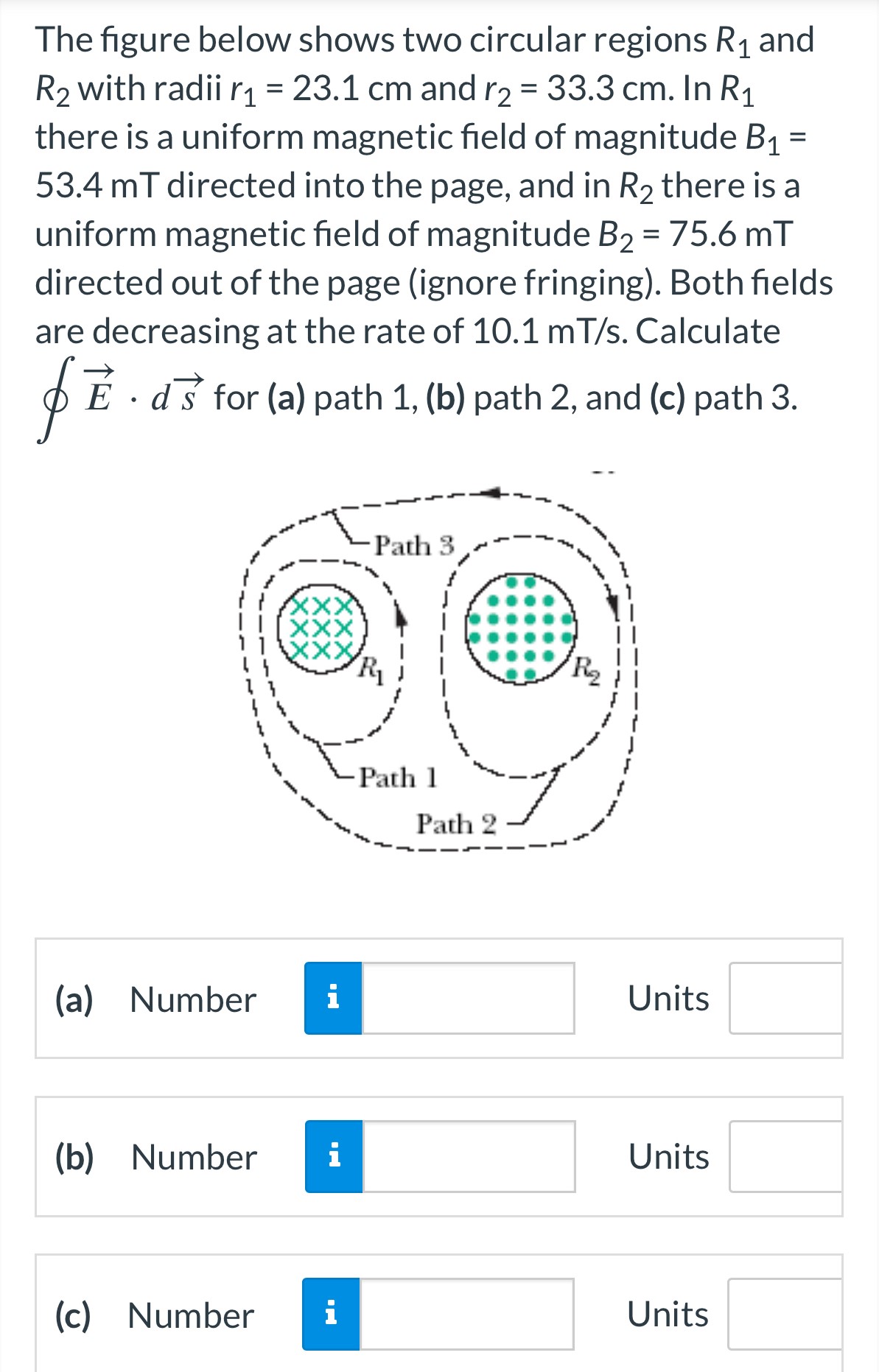The figure below shows two circular regions R1 and R2 with radii r1 = 23.1 cm and r2 = 33.3 cm. In R1 there is a uniform magnetic field of magnitude B1 = 53.4 mT directed into the page, and in R2 there is a uniform magnetic field of magnitude B2 = 75.6 mT directed out of the page (ignore fringing). Both fields are decreasing at the rate of 10.1 mT/s. Calculate ∮E→⋅ds→ for (a) path 1, (b) path 2, and (c) path 3. (a) Number Units (b) Number Units (c) Number Units
